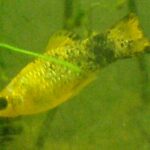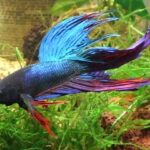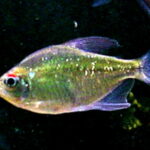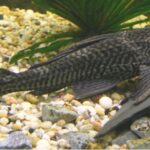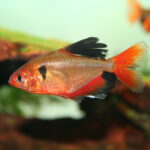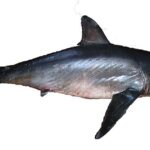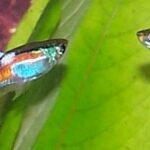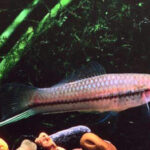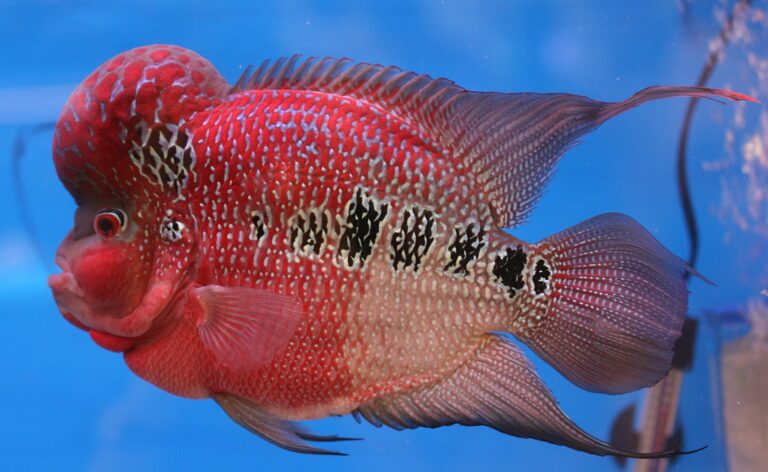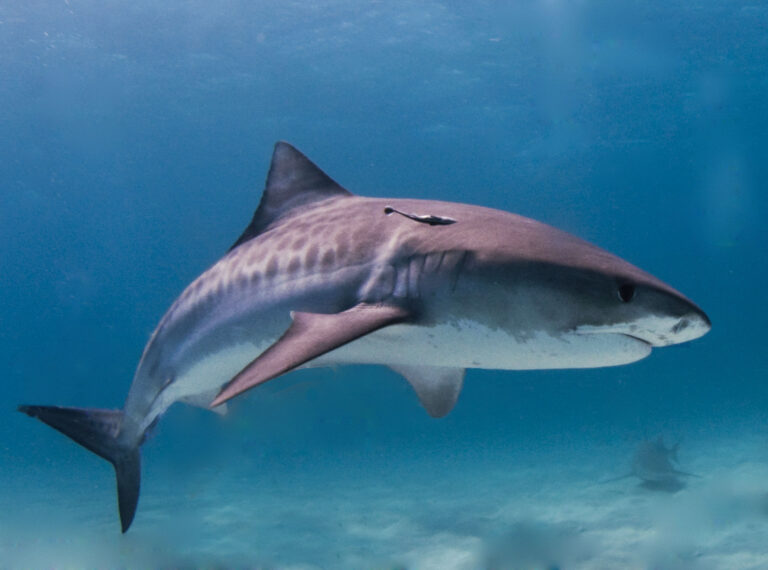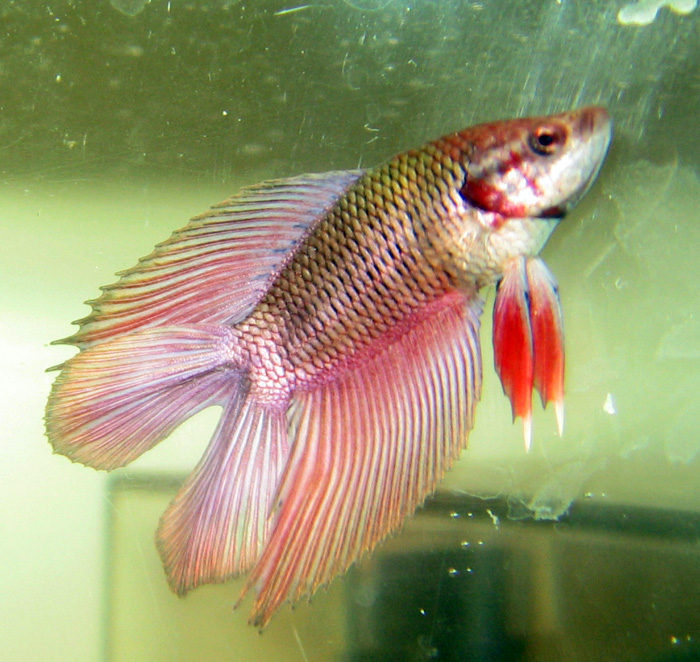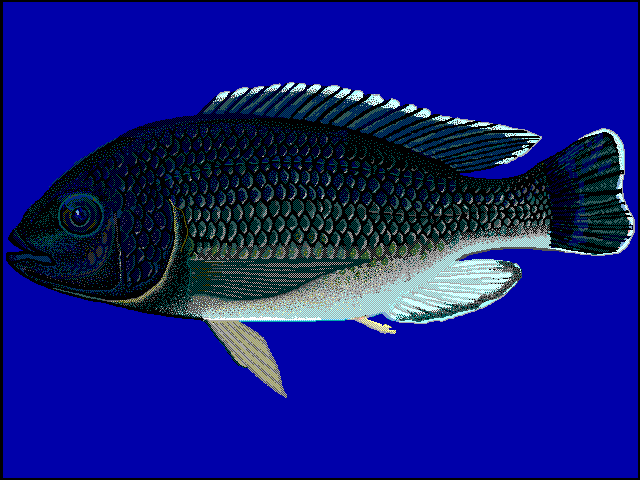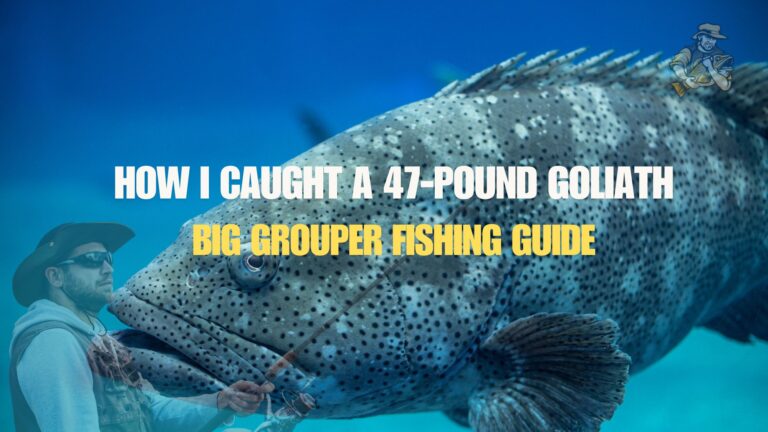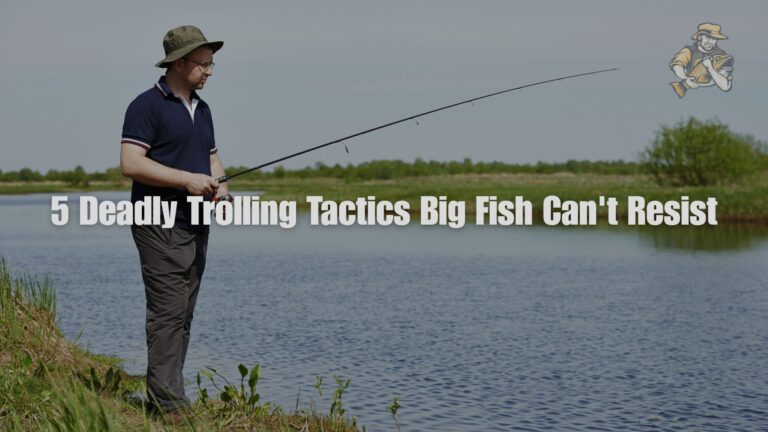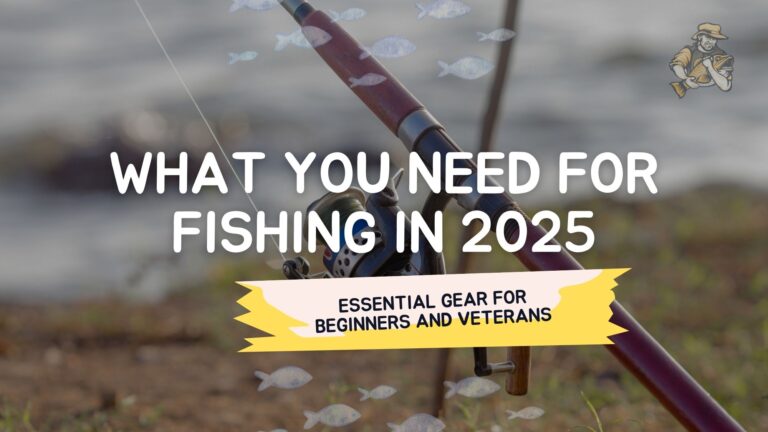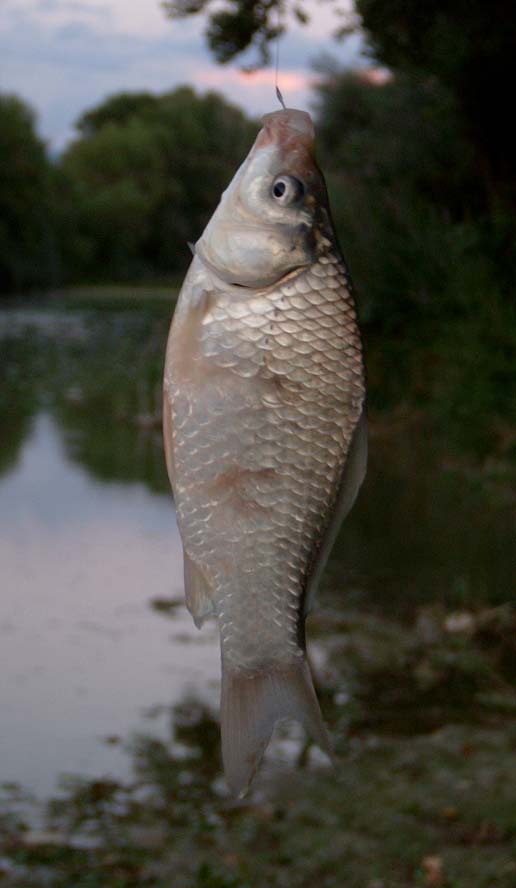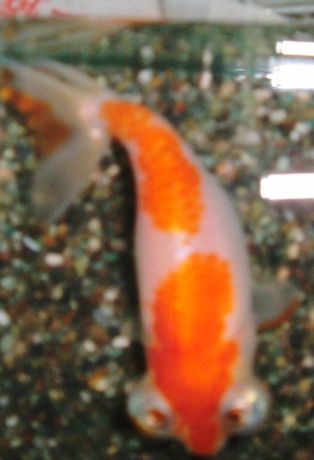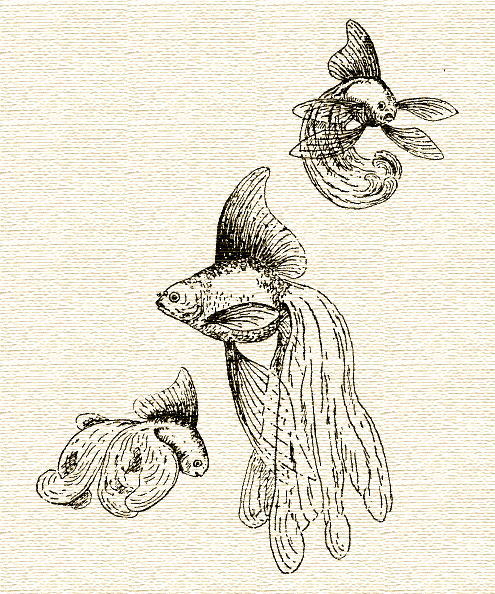Coral Platy
By Ryan Maron | Last Modified: June 11, 2025
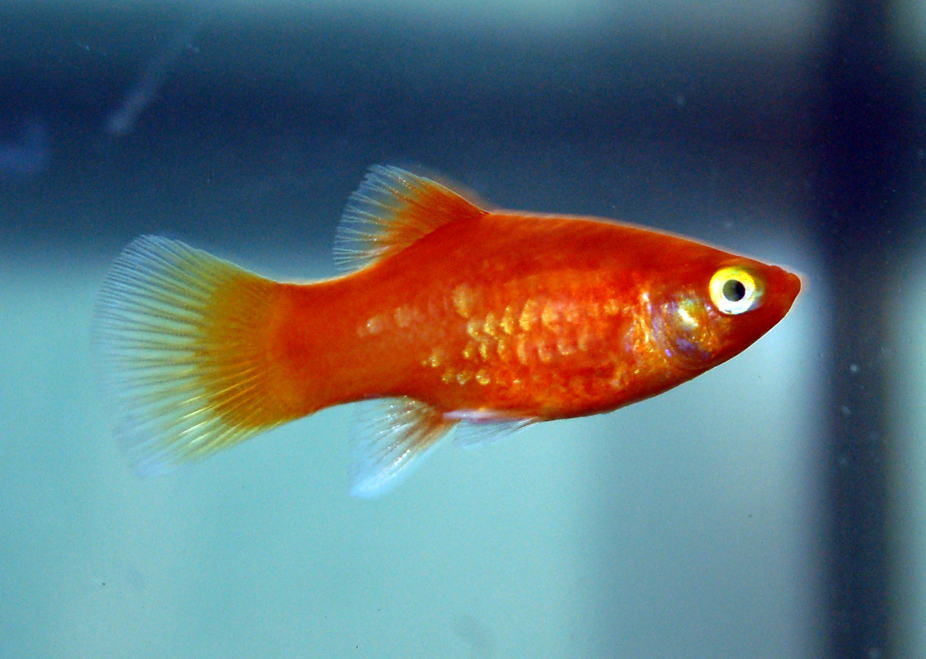
The Coral Platy (Xiphophorus maculatus) represents one of the most recognizable and beloved freshwater aquarium fish in the world. This vibrant member of the Poeciliidae family has captivated aquarists for over a century with its striking coral-red coloration and peaceful temperament. Originally native to the freshwater systems of Central America and Mexico, the Coral Platy has become a cornerstone species in the global aquarium trade, serving as an ideal introduction to fishkeeping for beginners while remaining a cherished addition to experienced aquarists’ collections.
The ecological significance of Coral Platy extends beyond its ornamental value. In their natural habitat, these fish play a crucial role as both predator and prey, feeding on algae, small invertebrates, and detritus while serving as a food source for larger fish species. Their prolific breeding capabilities and adaptability to various water conditions have made them excellent subjects for genetic research and breeding programs. The species has contributed significantly to our understanding of fish genetics, particularly in color inheritance patterns and sex determination mechanisms.
| Feature | Details |
|---|---|
| Common Name | Coral Platy |
| Scientific Name | Xiphophorus maculatus |
| Family | Poeciliidae |
| Typical Size | 4-6 cm (1.5-2.5 inches), 3-8 grams |
| Habitat | Shallow freshwater streams and rivers |
| Diet | Omnivorous – algae, insects, small crustaceans |
| Distribution | Mexico, Central America, Caribbean |
| Conservation Status | Least Concern |
Taxonomy & Classification
The Coral Platy belongs to the genus Xiphophorus, which encompasses approximately 28 recognized species within the family Poeciliidae. The scientific name Xiphophorus maculatus was first described by Günther in 1866, with “Xiphophorus” meaning “sword-bearer” in reference to the extended lower caudal fin ray found in males of related species, and “maculatus” referring to the spotted pattern common in wild populations.
Within the Poeciliidae family, the Coral Platy shares close evolutionary relationships with other popular aquarium fish including guppies, mollies, and swordtails. The family is characterized by their ovoviviparous reproductive strategy, where females give birth to live young rather than laying eggs. This reproductive method has proven highly successful in terms of species survival and dispersal.
The taxonomic classification of the Coral Platy places it within the order Cyprinodontiformes, which includes many small freshwater fish species adapted to warm climates. Recent molecular studies have refined our understanding of the phylogenetic relationships within Xiphophorus, revealing complex hybridization patterns between closely related species. The Coral Platy can readily hybridize with other Xiphophorus species, particularly X. hellerii (Green Swordtail), producing fertile offspring that have contributed to the diverse color morphs available in the aquarium trade.
Genetic research has identified the Coral Platy as a model organism for studying melanoma development and cancer genetics. The species possesses specific genetic markers that make it valuable for medical research, particularly in understanding the relationship between pigmentation genes and tumor formation. These scientific applications have elevated the Coral Platy beyond its ornamental status to become an important research tool in laboratories worldwide.
Physical Description
The Coral Platy exhibits distinctive coral-red to orange-red coloration that gives the variety its common name. Adult specimens typically measure between 4 to 6 centimeters in length, with females generally growing slightly larger than males. The body shape is characteristic of the Poeciliidae family, featuring a laterally compressed, somewhat elongated profile with a relatively high dorsal fin placement.
Sexual dimorphism is pronounced in Coral Platy populations. Males possess a modified anal fin called a gonopodium, which serves as a reproductive organ. This structure appears as a pointed, rod-like appendage that distinguishes mature males from females. Females retain the typical fan-shaped anal fin and develop a more rounded body profile, particularly when gravid. The gravid spot, a dark triangular area near the anal fin, becomes prominent in pregnant females.
The coral coloration results from a combination of erythrophores (red pigment cells) and xanthophores (yellow pigment cells) in the skin. This pigmentation can vary in intensity based on factors including diet, water quality, stress levels, and genetic background. Some individuals may display additional color variations, including deeper red tones or subtle orange highlights throughout the body.
Fin structure in Coral Platy follows the standard Poeciliidae pattern, with a single dorsal fin positioned posteriorly on the body. The caudal fin is typically rounded to slightly truncated, lacking the sword-like extension found in closely related species. The pectoral fins are relatively small and positioned low on the body, while the pelvic fins are located in a more posterior position compared to many other freshwater fish families.
Scale patterns show the typical cycloid structure common to most Poeciliidae species. The lateral line system is well-developed, providing the fish with excellent sensory capabilities for detecting water movement and pressure changes. Eyes are proportionally large and positioned to provide good binocular vision, an adaptation that serves them well in their natural habitat where they must constantly watch for predators while foraging.
Habitat & Distribution
The natural range of Coral Platy extends throughout the freshwater systems of eastern Mexico, Guatemala, Belize, and northern Honduras. These fish inhabit slow-moving streams, rivers, and associated wetlands where water temperatures typically range from 22 to 28 degrees Celsius. The species shows a preference for areas with moderate to heavy vegetation, which provides both food sources and protection from predators.
In their native habitat, Coral Platy populations are found in waters with pH levels ranging from 7.0 to 8.5, indicating a preference for neutral to slightly alkaline conditions. Water hardness typically ranges from 10 to 25 dGH, reflecting the mineral-rich nature of many Central American freshwater systems. These fish demonstrate remarkable adaptability to seasonal fluctuations in water chemistry and temperature, a trait that has contributed to their success in aquarium environments.
The species occupies various microhabitats within their preferred environments. Shallow areas with dense aquatic vegetation serve as primary foraging grounds, while deeper pools provide refuge during periods of environmental stress. Coral Platy are often found in areas where terrestrial vegetation overhangs the water, creating complex habitat structures that support diverse invertebrate communities.
Natural water flow patterns in Coral Platy habitat typically consist of gentle to moderate currents, with numerous areas of reduced flow where these fish can conserve energy while feeding. Seasonal variations in water level are common, with higher levels during rainy seasons and lower levels during dry periods. This variability has shaped the species’ adaptive capabilities and reproductive strategies.
Human activities have significantly impacted natural Coral Platy populations in some regions. Agricultural runoff, deforestation, and water diversion projects have altered many of their native habitats. However, the species’ adaptability has allowed populations to persist in modified environments, and in some cases, they have colonized new areas through both natural dispersal and human introduction.
Diet & Feeding Behavior
Coral Platy exhibit omnivorous feeding behavior, consuming a diverse array of food sources that reflects their adaptability and opportunistic nature. In their natural habitat, their diet consists primarily of algae, small invertebrates, detritus, and occasionally small fish fry. This varied diet provides the nutritional foundation necessary for their active lifestyle and prolific reproductive capabilities.
Algae forms a significant portion of the Coral Platy diet, with individuals spending considerable time grazing on periphyton attached to submerged surfaces. Their feeding behavior involves methodical scraping motions using specialized pharyngeal teeth adapted for processing plant material. Different species of algae provide varying nutritional benefits, with some contributing essential fatty acids and others providing important vitamins and minerals.
Invertebrate prey includes mosquito larvae, small crustaceans, water fleas, and various species of aquatic worms. Coral Platy demonstrate active hunting behavior when pursuing these prey items, using their excellent vision and lateral line system to locate and capture moving targets. Their feeding strategy adapts to prey availability, with individuals showing increased activity during periods when invertebrate populations are most abundant.
Feeding patterns vary throughout the day, with peak activity typically occurring during dawn and dusk periods. This crepuscular feeding behavior aligns with the activity patterns of many invertebrate prey species and provides optimal conditions for successful foraging. During midday hours, Coral Platy often seek shelter among vegetation while continuing to graze on available algae.
Seasonal variations in food availability influence feeding behavior and body condition. During periods of high productivity, individuals may consume up to 15-20% of their body weight daily, building energy reserves for reproduction and surviving leaner periods. The species’ ability to switch between different food sources based on availability demonstrates their remarkable ecological flexibility.
Similar feeding adaptations can be observed in other platy fish varieties, which share comparable dietary requirements and foraging strategies in their respective habitats.
Behavior & Adaptations
Coral Platy display complex social behaviors that reflect their evolutionary adaptations to life in structured freshwater environments. These fish typically form loose aggregations rather than tight schools, with group sizes varying from 5 to 20 individuals depending on habitat conditions and resource availability. Social hierarchy within groups is generally subtle, with dominance relationships primarily expressed through feeding priority and territory selection.
Territorial behavior in Coral Platy is most pronounced during breeding periods, when males establish and defend small areas containing suitable spawning sites. These territories typically encompass 0.5 to 1 square meter of habitat and include features such as dense vegetation or submerged structures. Territory holders engage in various display behaviors including fin flaring, body tilting, and rapid swimming patterns to communicate their dominance to potential rivals.
The species demonstrates remarkable environmental adaptability, with individuals capable of surviving in water temperatures ranging from 18 to 32 degrees Celsius for extended periods. This thermal tolerance reflects physiological adaptations including efficient oxygen utilization and flexible metabolic rates. Behavioral thermoregulation is common, with fish seeking warmer or cooler microhabitats based on environmental conditions and metabolic needs.
Predator avoidance strategies include rapid escape responses, shoaling behavior, and utilization of complex habitat structures for concealment. When threatened, Coral Platy can achieve burst swimming speeds of up to 10 body lengths per second, allowing them to quickly reach protective cover. Their ability to remain motionless among vegetation for extended periods serves as an effective camouflage strategy against visual predators.
Stress responses in Coral Platy involve both physiological and behavioral components. Chronic stress can lead to decreased immune function, reduced reproductive success, and altered coloration patterns. The species has evolved various coping mechanisms including flexible feeding schedules, modified social behaviors, and enhanced sensory vigilance to manage environmental stressors effectively.
Reproduction & Life Cycle
The Coral Platy employs an ovoviviparous reproductive strategy, where fertilized eggs develop internally within the female and young are born as free-swimming juveniles. This reproductive method provides significant advantages in terms of offspring survival rates compared to egg-laying species, as developing embryos are protected from environmental hazards and predation.
Sexual maturity is typically reached at 3 to 4 months of age, when individuals measure approximately 2.5 to 3 centimeters in length. Environmental factors including temperature, nutrition, and population density can influence the timing of sexual maturation. Optimal conditions generally result in earlier maturity, while stressful environments may delay reproductive development.
Mating behavior involves complex courtship rituals initiated by males. Courtship displays include lateral body presentations, rapid swimming patterns, and fin displays designed to attract female attention. Males may pursue multiple females simultaneously, and successful copulation results in internal fertilization through the gonopodium. The entire mating process typically lasts only a few seconds but may be repeated multiple times.
Gestation periods range from 24 to 30 days, depending on water temperature and other environmental factors. Females can store sperm for extended periods, allowing them to produce multiple broods from a single mating event. Brood sizes typically range from 20 to 40 fry, with larger females generally producing more offspring. The reproductive cycle can repeat continuously under favorable conditions, with females potentially producing broods every 4 to 6 weeks.
Newly born fry measure approximately 6 to 8 millimeters in length and are immediately capable of independent feeding and swimming. Parental care is minimal, with adults showing little recognition of their offspring. Juvenile development progresses rapidly, with young fish achieving adult coloration and size within 4 to 6 months under optimal conditions.
The reproductive success of Coral Platy has contributed to their popularity in aquarium breeding programs, where their prolific nature and genetic diversity make them excellent subjects for selective breeding. This characteristic is shared among many popular aquarium species, including various guppy varieties that exhibit similar reproductive strategies.
Predators & Threats
Natural predators of Coral Platy include a diverse array of aquatic and semi-aquatic species that share their freshwater habitats. Larger fish species such as bass, pike, and various cichlid species represent the primary piscivorous threats. These predators typically hunt Coral Platy through ambush strategies, utilizing vegetation cover and structural features to approach their prey undetected.
Avian predators play a significant role in Coral Platy mortality, particularly in shallow water environments where the fish are most vulnerable. Herons, egrets, and kingfishers are among the most effective bird predators, using their specialized hunting techniques to capture fish from surface waters. Diving species may also pose threats in deeper habitats where Coral Platy seek refuge.
Aquatic invertebrate predators include large dragonfly nymphs, water beetles, and predatory aquatic insects that primarily threaten juvenile Coral Platy. These invertebrate predators are particularly significant during early life stages when young fish are most vulnerable to predation. Adult Coral Platy may also fall prey to large crayfish and other opportunistic aquatic arthropods.
Environmental threats encompass both natural and anthropogenic factors that impact Coral Platy populations. Seasonal droughts can concentrate fish in reduced water bodies, increasing predation pressure and competition for resources. Extreme weather events, including hurricanes and floods, can dramatically alter habitat conditions and disrupt established populations.
Human-induced threats include habitat degradation through agricultural runoff, urban development, and water pollution. Chemical pollutants can affect Coral Platy health through direct toxicity or by disrupting their food web. Introduced species, particularly aggressive fish that compete for similar resources or prey directly on Coral Platy, represent ongoing conservation challenges in many regions.
Climate change impacts are becoming increasingly significant, with rising temperatures and altered precipitation patterns affecting the freshwater ecosystems that support Coral Platy populations. These changes can shift the balance between predator and prey species, potentially disadvantaging Coral Platy in their natural habitats.
Conservation Status
The Coral Platy is currently classified as “Least Concern” by the International Union for Conservation of Nature (IUCN), reflecting the species’ widespread distribution and stable population trends across most of its natural range. This conservation status is supported by the species’ high reproductive rate, environmental adaptability, and presence in numerous protected areas throughout Central America.
Population assessments indicate that Coral Platy maintain healthy numbers in the majority of their native habitats, despite ongoing environmental pressures. Their ability to adapt to modified environments has allowed populations to persist in areas where other native fish species have declined. This resilience stems from their flexible feeding habits, broad environmental tolerance, and prolific reproductive capabilities.
Regional variations in conservation status exist, with some localized populations facing greater pressures than others. Areas experiencing intensive agricultural development or urban expansion may support reduced Coral Platy populations, while more pristine habitats continue to maintain robust numbers. Monitoring programs in several countries track population trends to identify areas where conservation intervention may be necessary.
The extensive captive breeding programs for Coral Platy provide an additional conservation buffer, ensuring that genetic diversity is maintained even if wild populations face challenges. These captive populations serve as both a safeguard against extinction and a source for potential reintroduction programs should they become necessary in the future.
Conservation efforts for Coral Platy are often integrated into broader freshwater ecosystem protection initiatives. Habitat preservation, water quality management, and invasive species control programs benefit Coral Platy populations while addressing the needs of entire aquatic communities. These comprehensive approaches provide more sustainable long-term conservation outcomes than species-specific programs.
International trade regulations under CITES (Convention on International Trade in Endangered Species) do not currently apply to Coral Platy due to their stable conservation status and extensive captive breeding programs. However, monitoring of trade volumes helps ensure that wild populations are not overexploited for commercial purposes.
Human Interaction
The relationship between humans and Coral Platy extends back over 150 years, beginning with their introduction to European aquariums in the mid-1800s. These fish quickly gained popularity among aquarists due to their vibrant coloration, peaceful temperament, and relatively simple care requirements. Today, Coral Platy rank among the most commonly kept freshwater aquarium fish worldwide.
Commercial aquaculture operations produce millions of Coral Platy annually to meet global demand from the aquarium trade. These breeding facilities have developed sophisticated techniques for maintaining genetic diversity while producing fish with desired traits such as enhanced coloration, improved hardiness, and specific size characteristics. The economic impact of Coral Platy breeding and sales contributes significantly to the aquarium industry’s annual revenue.
Educational applications of Coral Platy include their use in classroom settings to teach students about fish biology, genetics, and aquatic ecosystems. Their hardy nature and observable behaviors make them ideal subjects for hands-on learning experiences. Many schools and educational institutions maintain Coral Platy populations as part of their science curriculum.
Research applications have established Coral Platy as valuable laboratory organisms for genetic studies, particularly in the fields of cancer research and pigmentation genetics. Their well-characterized genome and susceptibility to melanoma make them important models for understanding human disease processes. Scientific publications featuring Coral Platy research contribute to advancing medical knowledge and treatment development.
The cultural significance of Coral Platy varies across different regions, with some areas incorporating these fish into traditional practices or beliefs. In their native range, local communities may have specific names and cultural associations with wild Coral Platy populations. These cultural connections can play important roles in conservation awareness and habitat protection efforts.
Environmental management involving Coral Platy includes their use in some regions as biological control agents for mosquito larvae and other aquatic pest species. Their natural feeding behavior can help reduce populations of disease-carrying insects in certain environments. However, such applications require careful consideration of potential ecological impacts on native species and ecosystems.
Interesting Facts
Coral Platy possess the remarkable ability to change their coloration intensity based on environmental conditions and emotional states. This physiological response involves specialized cells called chromatophores that can rapidly adjust pigment distribution within the skin. Stress, excitement, or changes in lighting conditions can trigger these color modifications within minutes.
The species demonstrates an unusual reproductive phenomenon known as superfetation, where females can carry embryos at different developmental stages simultaneously. This adaptation allows for more frequent breeding cycles and increased reproductive output under favorable conditions. A single female may give birth to multiple broods with only weeks between deliveries.
Genetic research has revealed that Coral Platy can hybridize with at least 12 other Xiphophorus species, creating viable offspring with unique characteristics. These natural hybridization events have contributed to the extensive variety of colors and patterns available in the aquarium trade. Some hybrid combinations produce individuals with enhanced vigor and disease resistance.
Temperature-dependent sex determination occurs in some Coral Platy populations, where environmental temperatures during early development can influence the sex ratio of offspring. Warmer temperatures tend to produce more females, while cooler conditions favor male development. This mechanism may serve as an adaptive response to optimize reproduction under varying environmental conditions.
The species exhibits a form of social learning where individuals can acquire new behaviors by observing the actions of other group members. Young Coral Platy learn feeding strategies, predator recognition, and habitat preferences through social interactions with experienced individuals. This learning capability contributes to their adaptability in new environments.
Coral Platy have been documented living at altitudes up to 1,500 meters above sea level in their native range, demonstrating their ability to adapt to varying atmospheric pressures and oxygen levels. This altitude tolerance exceeds that of many other tropical freshwater fish species and reflects their robust physiological adaptations.
Their relationship with other aquarium species extends beyond simple compatibility, as they often form beneficial associations with bottom-dwelling species like Corydoras catfish that help maintain water quality through their feeding activities.
Frequently Asked Questions
How long do Coral Platy typically live in aquarium conditions?
Coral Platy generally live 2 to 3 years in well-maintained aquarium environments, with some individuals reaching 4 years under optimal conditions. Their lifespan is influenced by factors including water quality, diet, temperature stability, and genetic background. Proper care including regular water changes, appropriate nutrition, and stress reduction can help maximize their longevity.
Can Coral Platy survive in outdoor ponds year-round?
Coral Platy can survive in outdoor ponds in tropical and subtropical climates where water temperatures remain above 18 degrees Celsius throughout the year. In temperate regions, they may survive mild winters but require indoor housing during cold months. Pond populations often establish naturally breeding colonies when environmental conditions are suitable.
What distinguishes Coral Platy from other platy color varieties?
Coral Platy are distinguished by their specific coral-red to orange-red coloration, which results from unique combinations of pigment cells in their skin. While other platy varieties may display red tones, the coral variety exhibits a particular intensity and hue that sets it apart. The coloration is genetically determined and breeds true when maintained in pure breeding lines.
Do Coral Platy require special water conditions compared to other aquarium fish?
Coral Platy prefer slightly alkaline water with pH levels between 7.0 and 8.2, and moderate hardness between 10 and 25 dGH. These requirements are less demanding than many other aquarium species, making them suitable for community tanks with similar water chemistry needs. They adapt well to minor variations in water parameters but benefit from stability and regular maintenance.
Conclusion
The Coral Platy stands as a testament to the successful intersection of natural adaptation and human appreciation for aquatic beauty. Their vibrant coloration, peaceful nature, and remarkable reproductive success have secured their position as one of the most beloved freshwater aquarium fish worldwide. Beyond their ornamental value, these fish contribute significantly to scientific research and education, serving as important model organisms for genetic studies and classroom learning. Their stable conservation status and widespread distribution ensure that future generations will continue to appreciate and study these remarkable fish, while their adaptability suggests they will remain resilient in the face of environmental challenges.
Share The Article:
More Fish Species:
-
Largemouth Bass
The Largemouth Bass, scientifically known as *Micropterus salmoides*, stands as one of North America’s most iconic freshwater gamefish and…
-
Flowerhorn Cichlid
The Flowerhorn Cichlid represents one of the most distinctive and culturally significant hybrid fish species in contemporary aquarium keeping….
-
Tiger Shark
The Tiger Shark (Galeocerdo cuvier) represents one of the ocean’s most formidable apex predators, earning its distinctive name from…
-
Double Tail Betta
The Double Tail Betta, scientifically known as Betta splendens, represents one of the most distinctive and captivating variants within…
-
Cichlid
Cichlids represent one of the most diverse and fascinating families of freshwater fish, encompassing over 1,700 species distributed across…
-
Red Devil Cichlid
The Red Devil Cichlid stands as one of Central America’s most formidable and captivating freshwater predators, renowned for its…
Discover
-
How I Caught a 47-Pound Goliath: Big Grouper Fishing Guide
That morning started like most fishing trips – with complete optimism followed by immediate disappointment. We’d motored 12 miles…
-
5 Deadly Trolling Tactics Big Fish Can’t Resist
The first time I watched a 40-pound king salmon completely ignore my perfect trolling setup, I wanted to throw…
-
Basking Shark
The Basking Shark stands as one of the ocean’s most magnificent gentle giants, representing the second-largest fish species on…
-
Pensacola Fishing Tides Decoded: Fish More, Catch More
Look, I’ve spent the better part of my fishing life getting absolutely schooled by Pensacola’s tides. Just last month,…
-
North Jersey Fishing Guide: Best Lakes, Rivers & Seasons
If you’ve never experienced the fishing in North Jersey, you’re missing out on some genuinely underrated angling opportunities. From…
-
What do You Need for Fishing in 2025? | Essential Gear for Beginners and Veterans
As I was organizing my tackle box last weekend for an early spring trip to Lake Michigan, I realized…
Discover
-
Goldfish
The goldfish (Carassius auratus) stands as one of the most culturally significant and scientifically fascinating species in freshwater aquaculture…
-
Tiger Barb
The Tiger Barb (Puntigrus tetrazona) stands as one of Southeast Asia’s most recognizable freshwater cyprinids, distinguished by its vibrant…
-
Bubble Eye Goldfish
The Bubble Eye Goldfish stands as one of the most distinctive and recognizable varieties of ornamental goldfish, captivating aquarists…
-
Celestial Eye Goldfish
The Celestial Eye Goldfish represents one of the most distinctive varieties within ornamental aquaculture, known scientifically as Carassius auratus….
-
Blue Catfish
The Blue Catfish (Ictalurus furcatus) stands as North America’s largest freshwater catfish species and represents one of the continent’s…
-
Veiltail Goldfish
The Veiltail Goldfish stands as one of the most distinctive and graceful varieties within the goldfish family, renowned for…

